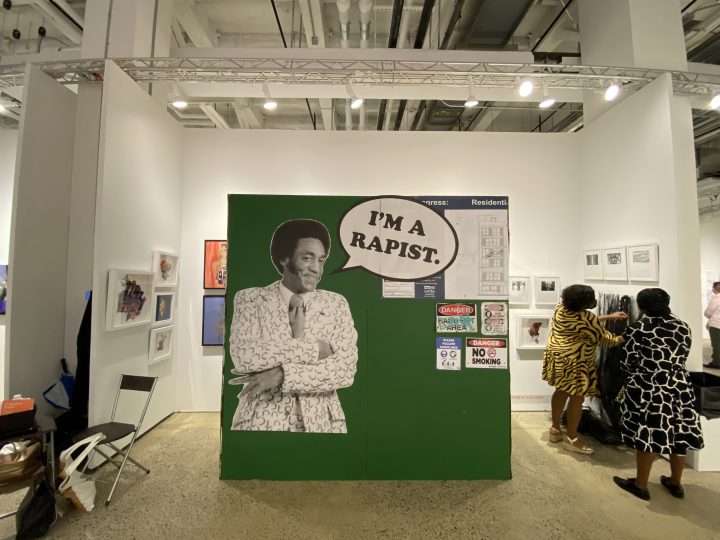

Armory Week in New York City, like all fair weeks anywhere, is a dizzying carousel of office lighting and modular walls, sprinkled with mostly forgettable art and punctuated by the occasional moment of aesthetic discovery. As far as I’m concerned, less art fairs is better than more, and anytime I hear about a new one, I’m immediately skeptical and instantly bored. This is the cynical attitude that I dragged with me as I entered Future Art Fair in Manhattan’s Chelsea neighborhood, a new show that bills itself as innovative and supportive of its exhibitors — promises I’ve heard packaged and re-packaged by art world entrepreneurs over the years that mostly turn out to be a flash in the pan.
What makes Future different, though, is its collaborative financial model: co-founders Rachel Mijares Fick and Rebeca Laliberte will split 35% of any profits equally among the founding galleries for the first five years of the show’s run. (The fair generates revenue through booth sales, ticket sales, sponsorships, and supplementary activities like its annual Holiday Market, a spokesperson said.) It’s also more intimate than the unwieldy Armory and even the younger, cooler Independent. A self-described
“capsule-sized exhibition,” Future brings 34 galleries in joint presentations (exhibitors can apply with a gallery of their choice or get paired up by the fair’s organizers).
The result is a manageable 16 booths featuring artwork combinations that sometimes work and sometimes don’t. New York City gallery Dinner showed a dual presentation of mystical paintings by Amie Cunat and sensuous sculptures by Langdon Graves against a mustard wall (exhibitors were offered four wall color choices; Graves cleverly combined them to create the conspicuous hue). Adjacent is a booth of
paintings and drawings by Shannon McConnell and Pedro Vélez from the Seattle gallery SEASON; wacky, semi-abstract works that couldn’t be more different from the design-infused aesthetic of their neighbors. I can’t imagine a museum curator bringing these two pairs together in a group exhibition, but Future has an experimental, YOLO vibe that tests the alchemy of dissonance. Other exhibitors opted to embrace the affinities between their programs. The local Trotter & Sholer and Swivel galleries joined forces in a thoughtful monochromatic display of photographs by Joseph Cochran, collages by Pajtim Osmanaj, and oil pastels by Luján Pérez surrounding a rotund installation of Derek Weisberg’s imposing porcelain sculptures. All these artists could stand on their own — Osmanaj’s theatrical, trompe-l’oeil landscapes pieces are mesmerizing — yet together, they shine.
Despite attempts by some passersby to strip or deface it, the mural is still standing, on the corner of Hancock Street and Tompkins Avenue, gallery owner Dominique Clayton told me; Khidr is known for inserting messages that elicit a response directly into a community. I asked her what it means, then, to show such a work in the rarefied art space of an art fair.
“When you think about street art and murals and foot traffic and things in passing, in contrast to an art fair and art consumption, they seem like two disparate things, but actually all of it is transactional, especially Black culture and how we’ve been consuming it in different way,” Clayton said. “That’s why I felt the need to bring it into this space, because I think these are parallel conversations: what are we consuming? What’s transactional? What’s the conversation about?” “And as a Black gallerist, it’s important for me to dictate what that conversation is,” she added. “I feel a responsibility.”
But Future Art Fair is warm and welcoming, and exhibitors seem relaxed and chatty, making dialogues like my exchange with Dominique possible. It’s also easier to admire small-scale works, like
Quentin James McCaffrey’s ten-by-eight inch oils of imagined interiors, precious gems that might get gobbled up by elsewhere. If the sterile yet frenzied environment of the megafair overwhelms you, as it does me, this is a refreshing option.Future Art Fair continues at the Starrett-Lehigh Building (
600 W 27th Street, Manhattan) through this Sunday, September 12.
0 Commentaires